p-Acetotoluidide
Synonym(s):p-Acetotoluidide;4′-Methylacetanilide;N-p-Tolylacetamide, Acetic acid p-toluidide, 4-Acetamidotoluene
- CAS NO.:103-89-9
- Empirical Formula: C9H11NO
- Molecular Weight: 149.19
- MDL number: MFCD00008677
- EINECS: 203-155-4
- SAFETY DATA SHEET (SDS)
- Update Date: 2025-01-27 09:38:02

What is p-Acetotoluidide?
Description
p-Acetotoluidide is an off-white to brown flake, odourless, solid or crystalline powder (pure form), which is soluble in hot water, alcohol, ether, chloroform, acetone, glycerol, and benzene. It is combustible and undergoes self-ignition (at 5450°C) but is otherwise stable under most conditions. p-Acetanilide on decomposition releases carbon monoxide, oxides of nitrogen, carbon dioxide, and toxic fumes. p-Acetanilide is used as an inhibitor of peroxides and stabiliser for cellulose ester varnishes. It is used as an intermediate for the synthesis of rubber accelerators, dyes and dye intermediate, and camphor. It is also used as a precursor in penicillin synthesis and other pharmaceuticals including painkillers and intermediates. Phenylacetamide structure shows analgesic and antipyretic effects. But acetanilide is not used directly for this application due to causing methemoglobinemia (the presence of excessive methemoglobin which does not function reversibly as an oxygen carrier in the blood).
Chemical properties
BEIGE TO LIGHT BROWN CRYSTALS OR CRYST. POWDER
Chemical properties
p-Acetotoluidide is an off-white to brown fl ake, odorless, solid or crystalline powder (pure form), soluble in hot water alcohol, ether, chloroform, acetone, glycerol, and benzene. It is combustible and undergoes self-ignition (at 545°C), but is otherwise stable under most conditions. On decomposition, p-acetanilide releases carbon monoxide, oxides of nitrogen, carbon dioxide, and toxic fumes. p-Acetanilide is used as an inhibitor of peroxides and a stabilizer for cellulose ester varnishes. It is used as an intermediate for the synthesis of rubber accelerators, dyes and dye intermediate, and camphor. It is also used as a precursor in penicillin synthesis and other pharmaceuticals, including painkillers and intermediates. Phenylacetamide structure shows analgesic and antipyretic effects. But acetanilide is not used directly for this application because it causes methemoglobinemia (the presence of excessive methemoglobin that does not function reversibly as an oxygen carrier in the blood).
The Uses of p-Acetotoluidide
4′-Methylacetanilide was used in the synthesis of stable crystalline phosphorus ylides.
Definition
ChEBI: 4-acetamidotoluene is a member of the class of toluenes that is 4-aminotoluene in which one of the hydrogens attached to the amino group has been replaced by an acetyl group. It is a member of toluenes and a member of acetamides. It is functionally related to a p-toluidine.
Synthesis Reference(s)
Journal of the American Chemical Society, 77, p. 5092, 1955 DOI: 10.1021/ja01624a042
Organic Syntheses, Coll. Vol. 1, p. 111, 1941
Synthesis, p. 118, 1977
General Description
Colorless needles.
Air & Water Reactions
Water insoluble.
Reactivity Profile
4'-Methylacetanilide is an amide. Flammable gases are formed by the reaction of organic amides with strong reducing agents. Amides are very weak bases (weaker than water). Imides are less basic yet and in fact react with strong bases to form salts. That is, they can react as acids. Mixing amides with dehydrating agents such as P2O5 or SOCl2 generates the corresponding nitrile. The combustion of these compounds generates mixed oxides of nitrogen (NOx).
Health Hazard
ACUTE/CHRONIC HAZARDS: When heated to decomposition 4'-Methylacetanilide emits toxic fumes.
Health Hazard
Exposures to p-acetotoluidide through ingestion or inhalation cause potential health effects. The symptoms of toxicity include, but are not limited to, irritation to the eyes and redness of the skin, wheezing, cough, shortness of breath, or burning in the mouth, throat, or chest, and respiratory tract irritation.
Safety Profile
Moderately toxic by ingestion. See also ACETANILIDE. Combustible. When heated to decomposition it emits toxic fumes of NO,. To fight fire, use water, foam, CO2, dry chemical
Storage
p-Acetanilide should be kept stored in a cool, dry place with the container closed when not in use
Purification Methods
Crystallise it from aqueous EtOH. [Beilstein 12 H 920, 12 I 420, 12 II 501, 12 III 2051, 12 IV 1902.]
Precautions
During handling and use of p-aetotoluidide, proper personal protective equipment should be worn. Avoid contact with the eyes, skin, and clothing. Avoid ingestion and inhalation. On accidental exposure at the workplace, workers should immediately fl ush the eyes and exposed part of the body with plenty of water. Workers should avoid using the contaminated clothing and shoes.
Properties of p-Acetotoluidide
| Melting point: | 149-151 °C(lit.) |
| Boiling point: | 307 °C(lit.) |
| Density | 1.21 |
| vapor density | 5.14 |
| refractive index | 1.5279 (estimate) |
| Flash point: | 168 °C |
| storage temp. | Store below +30°C. |
| solubility | 1.2g/l (experimental) |
| form | Crystals or Crystalline Powder |
| pka | 15.13±0.70(Predicted) |
| color | Beige to light brown |
| Water Solubility | 1 g/L (25 ºC) |
| Merck | 14,74 |
| BRN | 607036 |
| CAS DataBase Reference | 103-89-9(CAS DataBase Reference) |
| NIST Chemistry Reference | Acetamide, N-(4-methylphenyl)-(103-89-9) |
| EPA Substance Registry System | p-Acetotoluidide (103-89-9) |
Safety information for p-Acetotoluidide
| Signal word | Warning |
| Pictogram(s) |
 Exclamation Mark Irritant GHS07 |
| GHS Hazard Statements |
H302:Acute toxicity,oral H315:Skin corrosion/irritation H319:Serious eye damage/eye irritation H335:Specific target organ toxicity, single exposure;Respiratory tract irritation |
| Precautionary Statement Codes |
P261:Avoid breathing dust/fume/gas/mist/vapours/spray. P264:Wash hands thoroughly after handling. P264:Wash skin thouroughly after handling. P270:Do not eat, drink or smoke when using this product. P301+P312:IF SWALLOWED: call a POISON CENTER or doctor/physician IF you feel unwell. P302+P352:IF ON SKIN: wash with plenty of soap and water. P305+P351+P338:IF IN EYES: Rinse cautiously with water for several minutes. Remove contact lenses, if present and easy to do. Continuerinsing. |
Computed Descriptors for p-Acetotoluidide
| InChIKey | YICAMJWHIUMFDI-UHFFFAOYSA-N |
New Products
4,4-Difluoropiperidine hydrochloride tert-butyl 9-methoxy-3-azaspiro[5.5]undecane-3-carboxylate Indole Methyl Resin N-Isopropylurea N,N-Dicyclohexylcarbodiimide(DCC) MELDRUMS ACID 5-METHYLISOXAZOLE-4-CARBOXYLIC ACID Magnessium Bis glycinate Zinc ascorbate 1-bromo-2-butyne 2-acetamidophenol 9(10H)-anthracenone Erythrosin B, 4-Piperidinopiperidine 2-((4-morpholinophenylamino) (methylthio) methylene) malononitrile 2,4-dihydroxybenzaldehyde 3-(4-morpholinophenylamino)-5-amino-1H-pyrazole-4-carbonitrile Methyl 2-methylquinoline-6-carboxylate 2,6-dichloro-4-nitropyridine 4-Bromo-2-chlorobenzonitrile 2-(benzylamino)acetic acid hydrochloride 4-(tert-Butoxycarbonylamino)but- 2-ynoic acid 3,4-dihydro-2H-benzo[b][1,4]dioxepine 1-Phenyl-1-cycloprppanecarboxylicacidRelated products of tetrahydrofuran
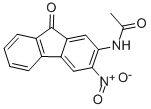

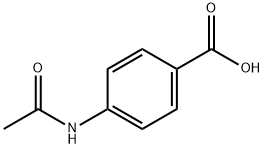
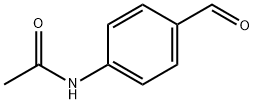
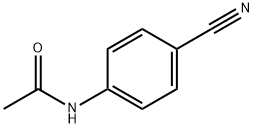
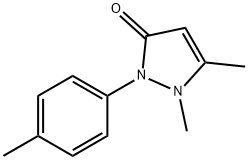
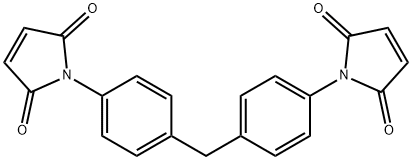
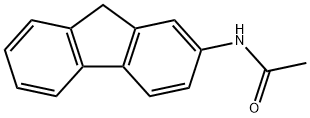
You may like
-
 p-Acetotoluidine CAS 103-89-9View Details
p-Acetotoluidine CAS 103-89-9View Details
103-89-9 -
 4′-Methylacetanilide CAS 103-89-9View Details
4′-Methylacetanilide CAS 103-89-9View Details
103-89-9 -
 3-(4-amino-1-oxoisoindolin-2-yl)-1-methylpiperidine-2,6-dione 98%View Details
3-(4-amino-1-oxoisoindolin-2-yl)-1-methylpiperidine-2,6-dione 98%View Details -
 614-19-7 98%View Details
614-19-7 98%View Details
614-19-7 -
 20677-73-0 (2,2-diethoxyethyl)methylamine 98%View Details
20677-73-0 (2,2-diethoxyethyl)methylamine 98%View Details
20677-73-0 -
 3-(4-(hydroxyamino)-1-oxoisoindolin-2-yl)piperidine-2,6-dione 98%View Details
3-(4-(hydroxyamino)-1-oxoisoindolin-2-yl)piperidine-2,6-dione 98%View Details -
 57381-49-4 2-bromo-4-chlorobenzonitrile 98%View Details
57381-49-4 2-bromo-4-chlorobenzonitrile 98%View Details
57381-49-4 -
 4,6-dichloropyrimidine-5-carbaldehyde 98%View Details
4,6-dichloropyrimidine-5-carbaldehyde 98%View Details
5305-40-8
